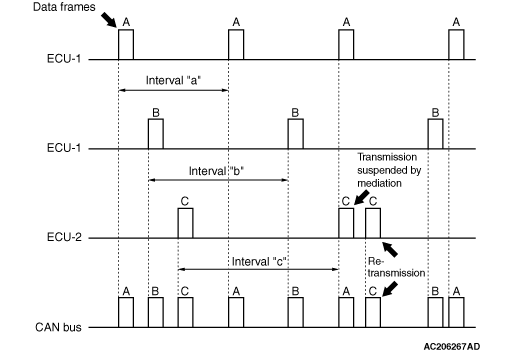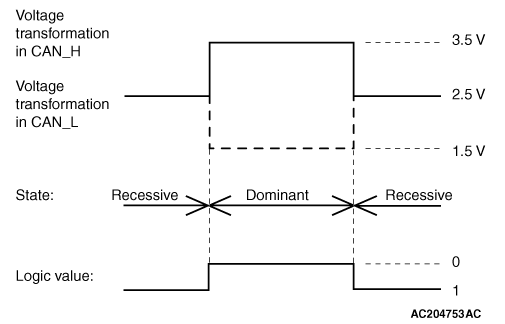 .
.| note | In the figure above, the data frame A is transmitted in "a" intervals, while the data
frames B and C are transmitted at intervals "b" and "c," respectively. |
 .
. .
. .
.
 .
.| note | In the figure above, the data frame A is transmitted in "a" intervals, while the data
frames B and C are transmitted at intervals "b" and "c," respectively. |
 .
. .
. .
.| note | If the suspended state continues for a specific time, new data (data frame content) is created
and sent. |
| note | There is enough capacity on the CAN bus, which never prevents data frames from being sent. |

